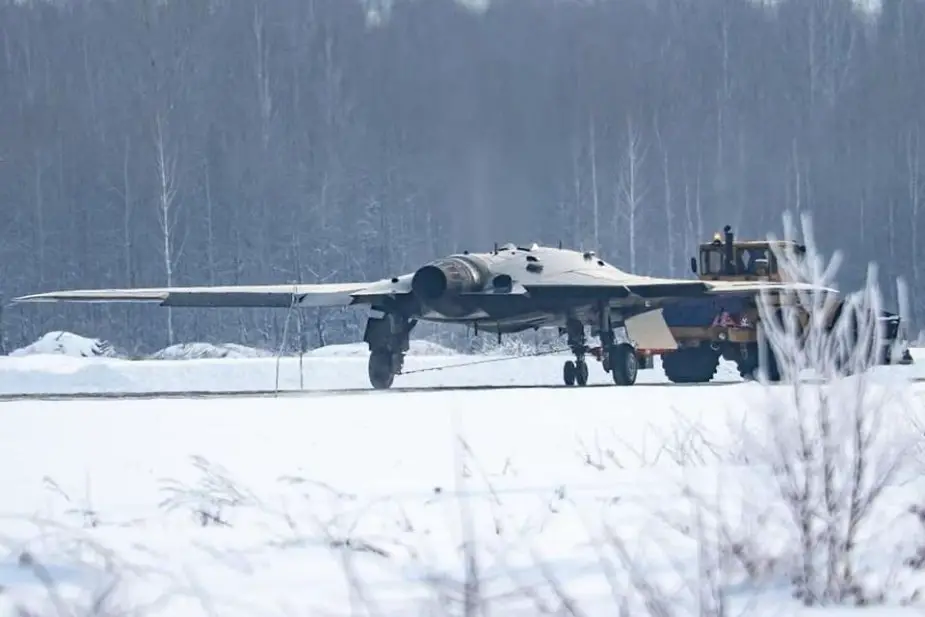Guided Grom bombs will expand the range of munitions for Okhotnik and Altius drones. They are heavy gliding bombs with a range of a hundred kilometers. Experts said the bombs will make drones capable of destroying strategic facilities in deep adversary rear and will remain invisible for radars, the Izvestia daily writes.
 Okhotnik S-70 drone (Picture source: Twitter)
Okhotnik S-70 drone (Picture source: Twitter)
Defence industry sources said a decision in principle had been made to arm Russian combat drones with precision gliding Grom 9-A-7759 bombs. Trials to release their mockups from Okhotnik S-70 drone have been held.
Guided bombs have not been integrated yet into Altius drone. In early 2018, the Tactical Missiles Corporation (KTRV) completed an R&D to assess Grom capabilities. However, the suspension of the drone project and its transfer from the Simonov Design Bureau to the Ural Civil Aviation Plant delayed the process.
Grom has a range of 60-120 km and exceeds all available smart bombs which fly not more than 9 km if released from a major altitude. Gliding bombs will make drones strike without entering the adversary air defence zone.
"The range of a stealth drone with gliding bombs includes tactical missile launchers, airfields, communication hubs, command posts, and columns of command-staff vehicles," expert Viktor Murakhovsky said.
Grom can destroy objects in the operational depth, including intermediate and shorter-range missile positions. Altius can carry at least two Grom. The carrying capacity of Okhotnik is even bigger.
KTRV created three options of modular precision gliding Grom bombs. Each weighs close to 600 kg. The first 9-A-7759 bomb has folding wings and a jet engine. The range comprises 120 km.
The second 9-A1-7759 option has an additional high-explosive fragmentation charge instead of the main engine. The range of the bomb after release does not exceed 65 km, but the explosive payload weighs 480 kg. It makes it 50 percent more powerful than ordinary high-explosive fragmentation 500-kg munitions.
The third option 9-A2-7759 carries thermobaric warhead instead of high-explosive fragmentation one. It better destroys fortifications and shelters.
The bombs are guided by onboard inertial navigation system and GLONASS and NAVSTAR signals. At the maximum distance the average deviation from the target ranges from two to ten meters.
The small diameter of the bomb and folding wings make it possible to drop it from internal compartments of Su-57 and Okhotnik. Frontline Su-34 bombers and Altius can carry it on suspension.
Grom can accomplish complicated manoeuvres in flight. It can U-turn 180 degrees and destroy targets in the back hemisphere of an aircraft or drone. "It is very convenient against surprise targets. A drone does not have to fly the whole range, it can loiter in a specific area. It will engage in reconnaissance and wait for an order to fire if important targets appear," Murakhovsky said.
Grom was intensively tested in 2017-2018. Trials were to be completed in late 2018 and bombs had to be accepted into service. However, there has been no official confirmation so far, the Izvestia said.
© Copyright 2020 TASS. All rights reserved. This material may not be published, broadcast, rewritten or redistributed.
















